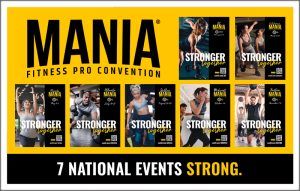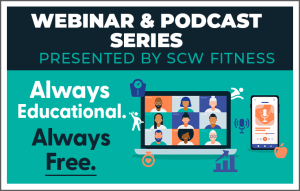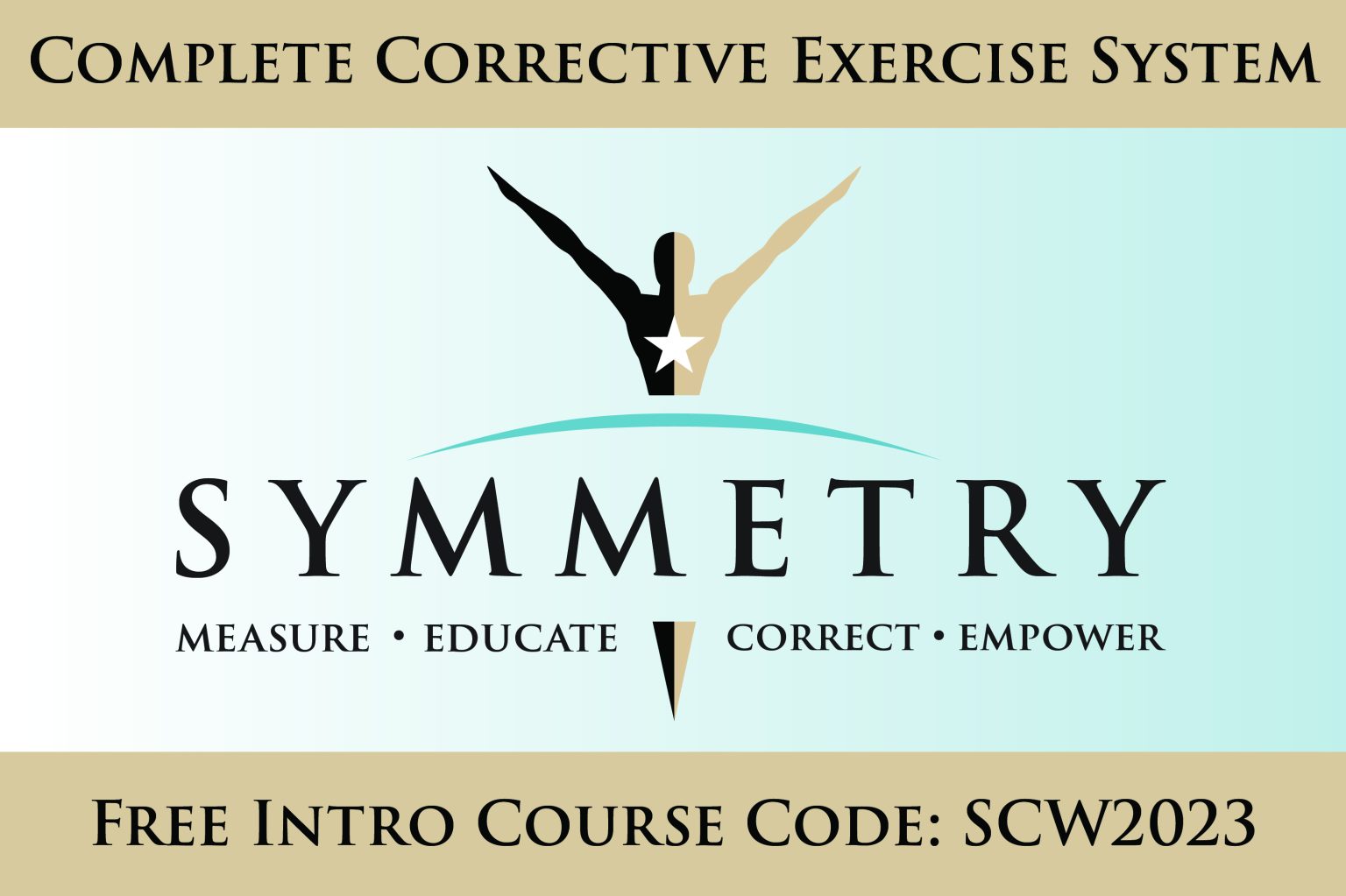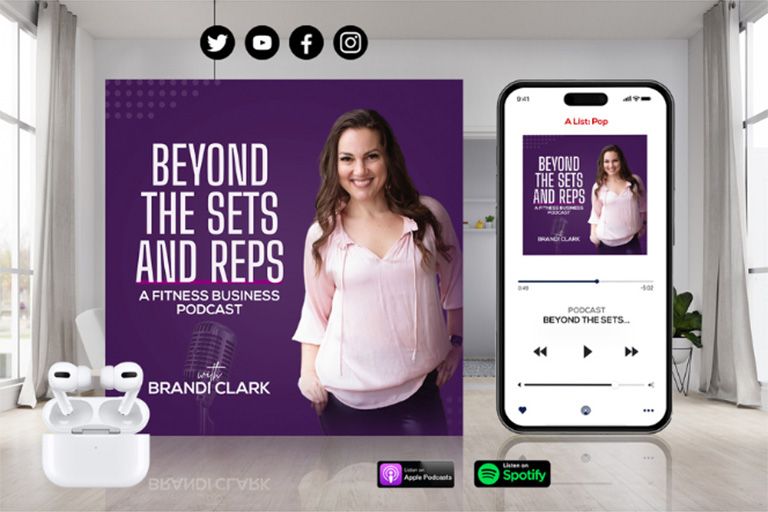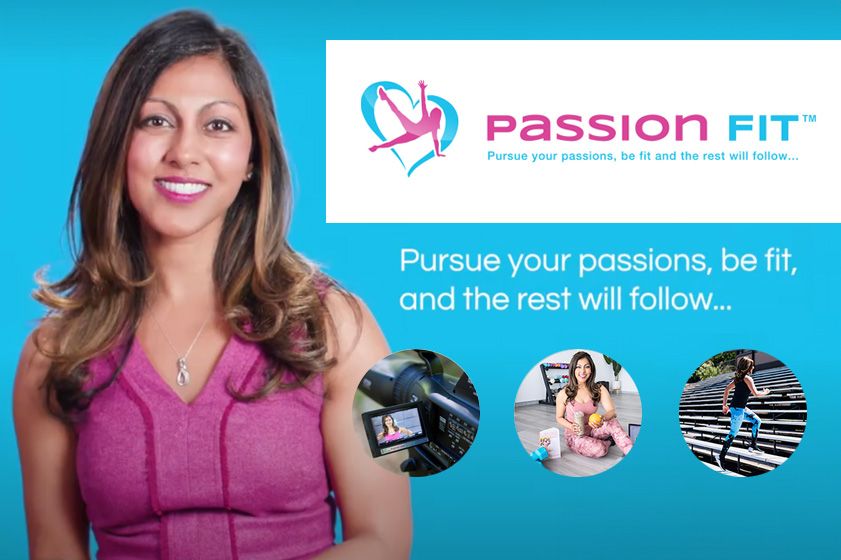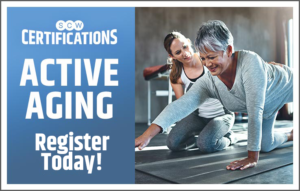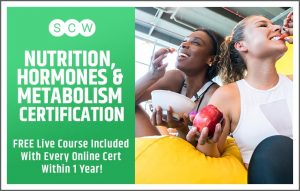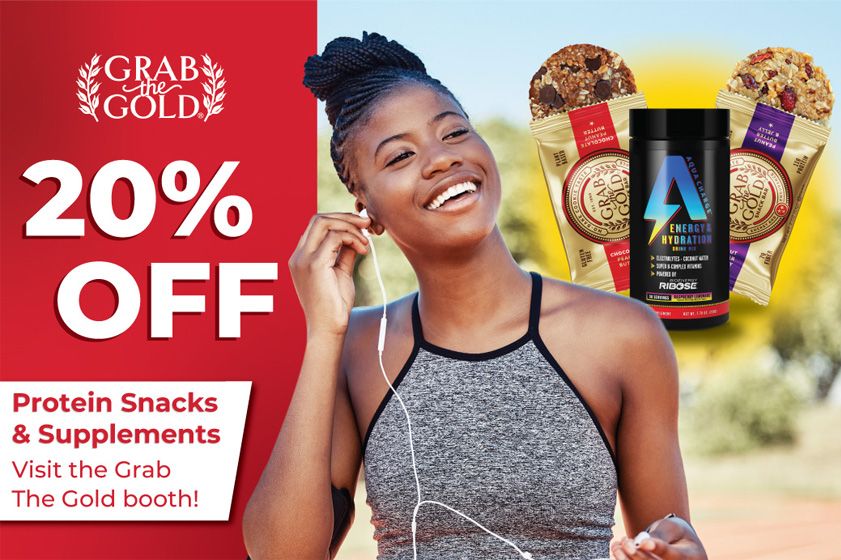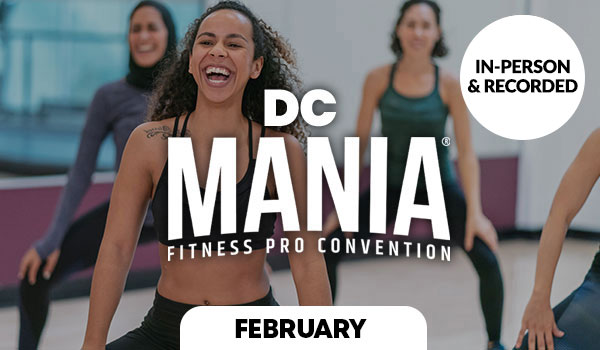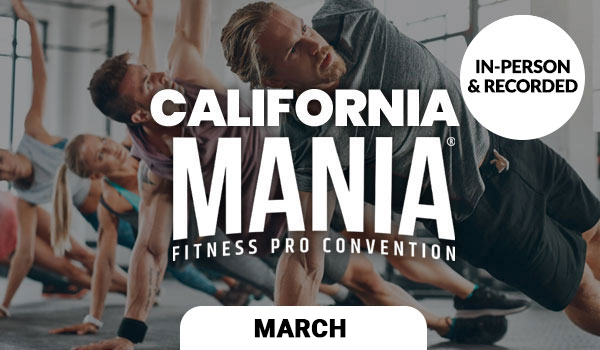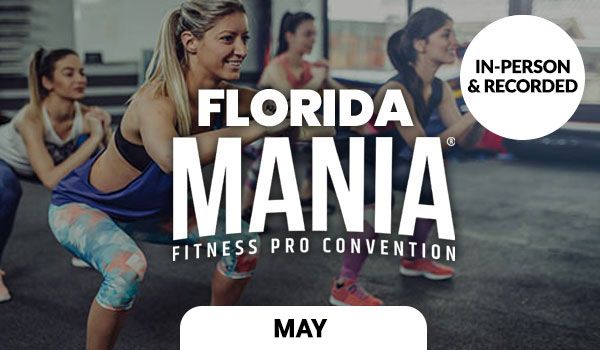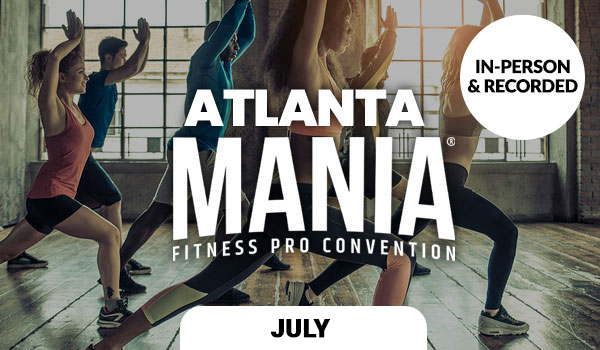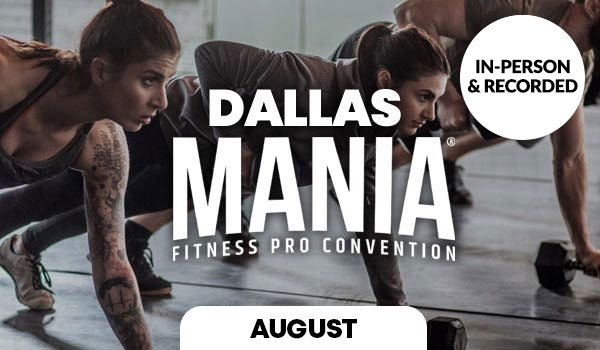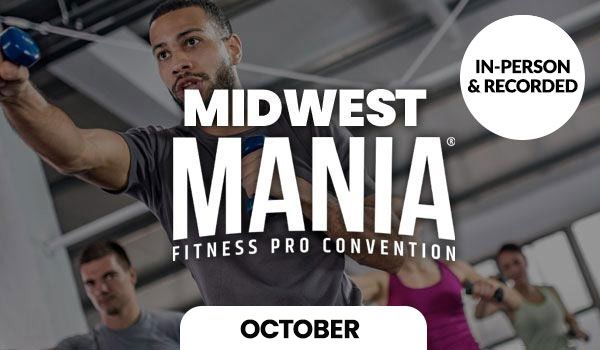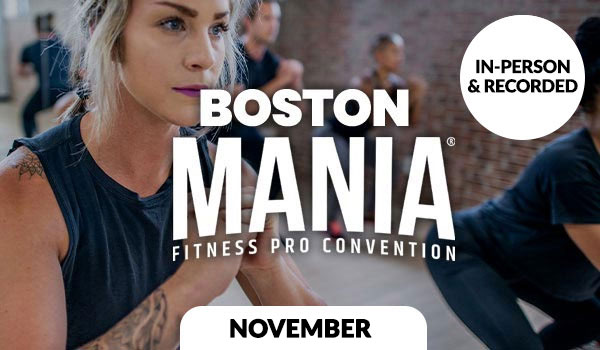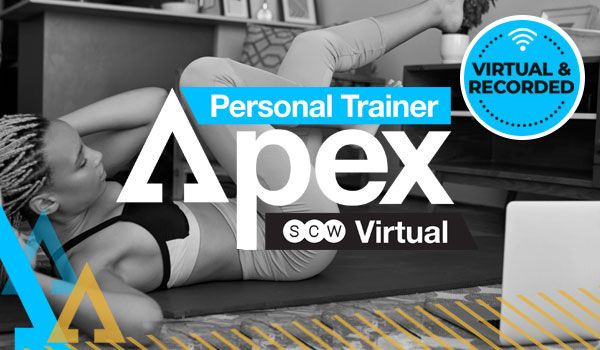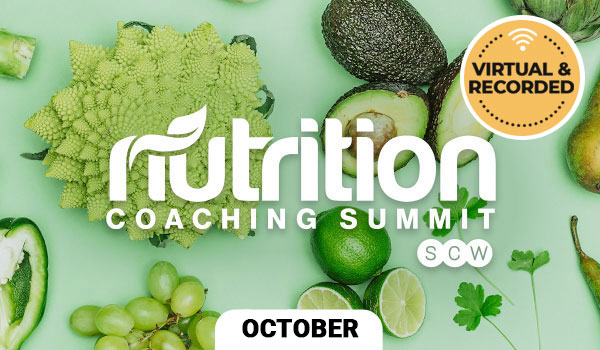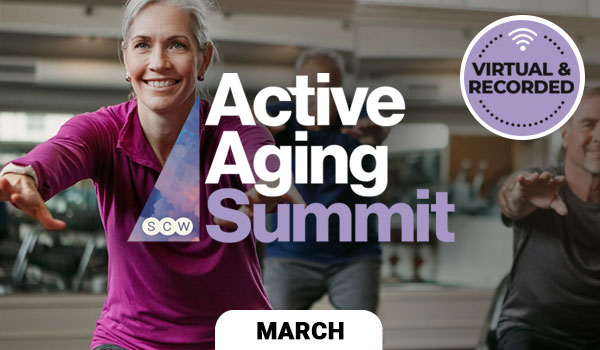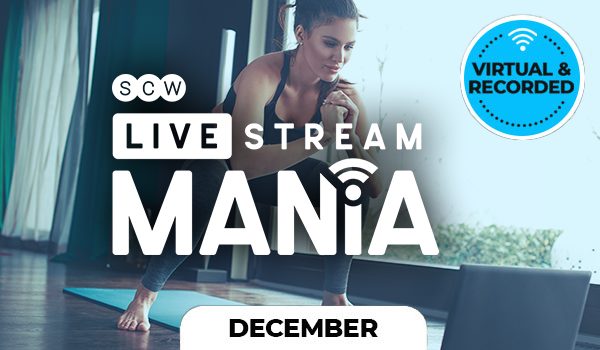
SCW Spotlite: Issue 68

How Long Does It Take to Lose Muscle When You Stop Working Out
Tristan Z
Original publication by TRX
In the pursuit of our fitness goals, our bodies adapt and strengthen in response to the challenges we put them through. They also adapt and lose size and strength in response to our lack of challenging them. While a day or two off for recovery is normal and necessary, sometimes we take more time off than we’d like. Injuries, illnesses, or the just demands of life can sometimes interrupt our exercise routines for weeks at a time, leading us to wonder: How long does it take to lose muscle if you stop working out?
Muscle atrophy, the loss of muscle tissue due to inactivity, can happen quickly for some, but slower for others, depending on quite a few factors. Understanding these factors, timelines, and strategies behind muscle loss can help us to make better-informed choices about our fitness journey. So, let’s get into the science behind what happens to our muscles when we get thrown off our routine.
HOW FAST CAN YOU LOSE MUSCLE?
Keep in mind there’s a difference between missing a couple of weeks of workouts (while on vacation) and not moving at all, (as if you were bedridden with severe illness or injury). Missing workouts will cause you a little loss in strength after 2-3 weeks, but it won’t be as detrimental if you’re still moving around.
Being completely inactive or immobilized results in more loss at a faster pace. Here are some general timelines of muscle atrophy for complete inactivity:
Early Changes: Research suggests that within the first two weeks of complete inactivity or immobilization, noticeable changes in muscle size and strength can occur. Some studies have shown that muscle protein synthesis starts to decline after a few days of disuse.
Moderate Atrophy: After around two to three weeks of inactivity, more significant muscle atrophy can be observed. Studies have found that individuals can experience a loss of about 1-3% of muscle mass per week during this phase.
Accelerated Atrophy: Prolonged periods of inactivity, such as four weeks or more, can lead to more rapid muscle loss. During this phase, muscle protein breakdown can become more prominent than synthesis, contributing to accelerated atrophy.
FACTORS THAT INFLUENCE MUSCLE LOSS
It’s important to remember that the exact speed of muscle loss differs for each person and depends on individual circumstances, with age, injury history, and current fitness level being some of the most notable.
AGE
Muscle loss patterns seem to be the same for most age groups when the reason is inactivity, but remember that the older you are, you’re also dealing with natural muscle loss.
As you age your body experiences a natural decline in muscle mass, known as sarcopenia. This is due to changes in hormonal balance, reduced protein synthesis efficiency, and altered nerve signaling. After the age of 50, you can lose 1-2% of skeletal muscle per year. Since inactivity accelerates this process, it’s best to keep up a regular movement routine.
Incorporating regular resistance exercises, even in small doses, can help retain muscle mass and functionality at any age, but is especially helpful after middle age.
INJURY
When you’re hurt and can’t move as much, immobilization hampers blood flow, resulting in reduced nutrient delivery and waste removal from muscle tissue. As a result, muscle protein synthesis slows down, and breakdown accelerates. To counteract this, physical therapy plays a crucial role.
Tailored rehabilitation programs, involving gentle movements and progressively increasing loads, not only prevent extensive muscle wasting but also foster a speedier recovery. Keeping up with any workouts that involve other uninjured muscle groups will also help mitigate the losses in strength in other areas.
FITNESS LEVEL
The more fit you are, the longer it takes to lose muscle mass. Those who have consistently engaged in resistance training (5+ times per week for several months) are better equipped to retain muscle mass during breaks. The concept of “muscle memory” is at play here – previously trained muscles regain lost strength and size more rapidly than untrained muscles. This highlights the importance of staying active, even in non-strenuous ways, during periods of inactivity to stave off significant muscle loss.
HOW TO TELL IF YOU’RE LOSING MUSCLE
If you’re obsessed with spreadsheets, keeping track of your workouts, and measuring workout volume (number of reps x amount of weight lifted) you’ll be able to notice quickly if your numbers start decreasing. If you don’t have any of these measurements or records on hand, don’t worry. Noticing diminishing strength during exercises you previously found easy is telling enough. Lower muscle mass equals lower strength. You’ll feel it.
The same goes for those who take progress photos of their physique and/or take circumference or body fat measurements for composition – you’ll notice quickly the changes in muscle definition. If you haven’t done this, consulting a fitness professional can help you learn how to keep track of your body composition. Remember: what gets measured gets managed.
It’s important to remember that there’s a difference between muscle soreness and true muscle loss. While soreness dissipates after a few days, muscle loss requires weeks of inactivity to happen.
HOW TO BUILD BACK MUSCLE
Stopping muscle loss and rebuilding it demands focused nutrition and exercise. Professional guidance can speed up the process.
1. MAINTAIN CALORIE INTAKE
A calorie is a unit of measurement for energy and you get these from the food you eat. Eating enough calories to get you through your workouts is paramount to building and keeping muscle. Calculate your maintenance calories, adjusting for activity level, to ensure you’re providing your body with the energy it needs to build back muscle mass. We recommend figuring out how many calories you burn in a workout so that you can have an idea how many calories you need to eat every day. Keep in mind that extreme caloric deficits can amplify muscle loss, so opt for a balanced approach that supports muscle recovery. It may be best to consult a fitness or nutrition professional for help.
2. EAT PROTEIN
Protein plays a critical role in muscle repair and synthesis. When you challenge your muscles, small tears or damage occur in the muscle fibers (this is the soreness you feel after your workout). Protein is essential for repairing these microtears and building new muscle tissue. During the recovery process, your body uses amino acids, the building blocks of protein, to repair and rebuild the damaged muscle fibers, making them stronger and more resilient. Adequate protein intake provides the necessary amino acids for this process. Essential amino acids, which cannot be produced by your body and must be obtained through diet, are especially crucial.
Protein intake is not only important immediately after exercise but also over the long term to support continuous muscle maintenance and growth. Prioritize high-quality protein sources like lean meats, poultry, fish, eggs, and plant-based options.
Aim for an adequate intake to fuel recovery; recommendations typically hover around 1.2 to 2.0 grams of protein per kilogram of body weight.
Related Article: Remedies for Muscle Recovery
3. BUILD YOUR MUSCLES THROUGH TRAINING
Try crafting a comprehensive full-body 6 day workout plan to regain lost muscle. Begin with low to moderate resistance and gradually intensify to prevent injuries. A combination of resistance training and cardiovascular exercises fosters overall fitness while minimizing muscle loss.
STOP LOSING MUSCLE TODAY
Remember, if you’re not injured or bedridden, try to get back to resistance training when you can. You’ve got about 2-3 weeks before you lose a significant amount of muscle mass and strength.
If you are injured, incorporating light resistance exercises can help to maintain muscle function and metabolic health. Again, it may be in your best interest (of time and sanity) to consult a fitness professional or physical therapist to help guide you through this process, as they can tailor a plan specific to your needs.
About the Author: Tristan Z
Bio for Tristan Z
Follow us on IG: https://www.instagram.com/scwmania/
Like our FB page: https://www.facebook.com/scwmania
Follow us on X: https://twitter.com/scw_mania
Connect with us on LinkedIn: https://www.linkedin.com/company/scwfit/
Follow us on IG:
https://www.instagram.com/scwmania/
Like our FB page:
https://www.facebook.com/scwmania
Follow us on X:
Connect with us on LinkedIn:

Structural Alignment Offers Many Benefits to Your Health
by Patrick Mummy
Courtesy of folsomtimes.com
What is structural alignment and why is it important when it comes to your health? Patrick Mummy here, the founder of Folsom’s Symmetry for Health and I’m excited to answer those commonly asked questions here today.
Structural alignment is important because we live on the planet Earth, which is subject to the constant downward force of gravity, as I have discussed in previous articles.
In order to balance erect on two limbs on earth’s surface we must: A) Counter the downward forces and B) Do so in the most efficient manner possible. The primary focus of our existence should not be battling gravity. Yet without realizing it, this is what the majority of us are spending our energy on. Here are a few reasons why it is important to have good posture.
The erect posture is an end result of a very dynamic process of checks and balances. It is what is achieved when the various systems of the body including the skeletal, muscular, and nervous systems, are in balance with each other and the external environment. However, this is not a static state. Therefore, our ability to stand erect is a continual process of adaptation to both internal and external stimuli.
Structural alignment is defined as skeletal correctness in the human body. It is essentially what is achieved when the skeletal frame is positioned perpendicular to the earth’s surface and the force of gravity.
This right angle (ninety degree) relationship between our body and the environment forms the criterion for both anatomical and physiological correctness, as well as psychological and emotional well-being. When this right-angle fundamental is achieved the skeletal system as a whole operates at its highest level, achieving the most amount of work with the least amount of effort.
Physiological correctness is when the organ systems of the body operate effectively and efficiently. In other words, the organs are spaced sufficiently apart to: A) receive adequate nutrition (water, oxygen, minerals and vitamins) from the circulatory system and B) expand and contract maximally. This can only be achieved if the body is in a state of anatomical correctness.
The inter-relatedness of physiological and anatomical correctness can be readily observed in the following example: The effect of posture on the heart. One of the axial skeleton’s purposes is to house and protect our organ system. Every organ is packed into this bony casing like a jigsaw puzzle, with every piece fitting perfectly against the next. There is no room for anything else.
Organ walls consist of a labyrinth of veins and arteries that carry nourishment to, and waste away from their cells. Any skeletal misalignment leads to compensation. Compensation, in this context, means that the space that these organs fit into is changing. Should the change be one of decreased space (as in the prevalent rounded shoulder posture/kyphosis) the result will be organ crowding. Organ crowding inhibits the ability of the lungs to expand fully and take in enough oxygen. It cannot, therefore, provide adequate oxygen to the rest of the organ systems, which include the heart.
If the heart is undernourished, it will be weak and unable to pump enough blood to the brain and the body. Without adequate oxygen and nutrients carried in the blood the various organ systems will soon become undernourished and weak, and their tissue will begin to atrophy and die. CVD results from a combination of factors, but all are aspects of organ crowding and inability to perform their intended job description.
In summary, when the bones are not perpendicular to the earth’s surface and the line of gravity, an optimal internal environment, where the organ systems of the body can operate 100% effectively and efficiently, cannot be maintained. Nor can the skeleton carry the majority of the body’s weight with minimal muscular tension. What this means is that our body will hold excess tension in and around its load bearing joints, leaving the organ systems weak and undernourished. These compromised physical states severely inhibit our ability to live our lives completely; the fundamental inhibiting factor being fatigue and subsequent weakness, and pain.
Today, a 60-hour workweek is commonplace, as is driving a car, traveling, going to the movies, and working out. Stop and think for a minute how you would feel if you could not sit for more than 20 minutes without experiencing excruciating pain. How would this impact your life and how would you feel about yourself and your life? Symmetry sees many clients who have not been to the movies, or traveled, or had sex in years.
These clients report feeling out of control, frustrated and depressed; in addition, their bodies hold these feelings and manifest them physically. The postural evaluations I perform as part of Symmetry allow me to observe the emotional stance of the person. It is an opportunity to visually and auditorily assess the messages coming from my client. As we now reflect on our current situation, slowly entering back into the workplace, ask yourself if you are bringing the best “you” back to the office.
Roger Sperry won the Nobel Prize for physiology of medicine for his discoveries concerning the functional specialization of the cerebral hemispheres. The summary of his work is described in this quote; “Better than 90% of the brain’s output is directed toward maintaining your body in its gravitational field. Therefore, the less one spends on one’s posture, the more energy is available for healing, digestion and thinking.”
About Symmetry for Health
Whenever Symmetry gets a client into their office, they ask them if anyone has ever explained their pain as it relates to gravity. The answer inevitably is ‘no’. This is because western medicine tends to move pain to the forefront of the perceived problem and therefore the majority of the conversation is focused on the pain itself. For example, many of Symmetry’s clients are very excited to show them their X-rays or MRI reports. They assume the Symmetry staff will also want to talk about these reports because that is what most clients are used to talking about when dealing with their pain. To Symmetry, pain is simply the by-product of systemic breakdown due to years of dysfunction and not a complete reason in and of itself.
Mummy, the owner and founder of Symmetry, created his company in 1997 in San Diego to complete the tie between reactive medicine and preventative medicine. In 2007 Patrick received a patent on his quantitative approach to the human frame and the treatment of the human frame, called AlignSmart. Ironically, this was the same year he moved back up to northern California with his two daughters, and eventually ended up in Folsom, where he has spent the last 10 years refining his system.
Newton’s third law states that “For every action there is an equal and opposite reaction”. This law is the basis from which Symmetry was created and it remains the most important aspect because gravity is constant and dependable. Just as an architect designs a building, or an engineer, a car, the number one issue they focus on is gravity and the forces that apply to the structures surrounding it, whether static or dynamic. When the human frame does not apply a balanced reaction up against the force of gravity in a constant and equal way, then ANY structure will be forced to adjust. This is the definition of compensation and the reason why one ultimately obtains chronic pain.
When a client comes into Symmetry, they don’t look at them in terms of pain but rather as a delicate system of levers and pulleys. Symmetry measures your posture and compares that to the blueprint your body is supposed to reflect.
If it doesn’t, which most don’t, then Symmetry’s AlignSmart software technology creates a suggested sequence of corrective stretches that they teach to you so that you can fix yourself. “If you cannot take your practitioner home with you every day, then whatever pain-relief treatment you have sought will more then likely be temporary”, says Patrick Mummy. “And at the end of the day, this creates reliance because pain relief is the focus, and not the education and support one needs to make a long-lasting change.”
If you’d like to experience Symmetry for Health join Patrick and his team at SCW Florida MANIA®, May 3-5, and other events throughout the year. Otherwise, visit their website at www.symmetryforhealth.com or call them to set up a consultation at 916-467-7764.
 About the Author: Patrick Mummy
About the Author: Patrick Mummy
Patrick earned a baseball scholarship to San Diego State University & graduated with a Bachelor’s Degree in Athletic Training. He founded Symmetry for Health & was awarded a patent on a measurable system for postural assessment and corrective exercise – AlignSmart Technology. Patrick has written three books, the latest – “The Physics of Pain; becoming Pain-Free”. He has spoken on the subject of postural assessment at multiple conferences & corporations.
Follow us on IG: https://www.instagram.com/scwmania/
Like our FB page: https://www.facebook.com/scwmania
Follow us on X: https://twitter.com/scw_mania
Connect with us on LinkedIn: https://www.linkedin.com/company/scwfit/
Follow us on IG:
https://www.instagram.com/scwmania/
Like our FB page:
https://www.facebook.com/scwmania
Follow us on X:
Connect with us on LinkedIn:

Do These 4 Things Everyday to Grow Your Fitness Business
by Brandi Clark
“If you aren’t marketing your business every single day, you’ll soon find you don’t have a business to run.”
One of the biggest challenges for any trainer or fitness business owner is balancing your time between training clients, and marketing your business so you can find new clients. We know we need to do things that bring new clients through the door: post to social media, send emails, direct outreach, and most importantly follow up with people who have previously expressed interest. However, those activities always get pushed aside when you have a current client waiting for you at the gym…now!
The key is being able to streamline, simplify, and automate your processes, allowing you to focus on what matters most.
Hey, are you a podcast listener? If you’d like a more in-depth look at this article, click here to listen to episode #2 of Brandi’s Beyond The Sets And Reps Podcast
The Significance of Marketing Your Business
Marketing is the most important activity in your business, even more important than client deliverability. Why? Because without continuous marketing efforts, you risk running out of clients. Therefore, every day, when you sit down to work you need to ask yourself, “How do I market my business so I can find new clients?” Let’s explore the crucial 4 steps and actions within the marketing category.
The Power of MMAs: Money-Making Activities
At StandOut Fit-Pro we have what we call MMAs—Money-Making Activities. These seemingly small, unimportant tasks become significant over time, thanks to the compound effect. The key MMAs for daily business growth are
● content creation
● count (expanding your friends and followers)
● comments (engaging with those who interact with your content)
● conversations (private interactions in direct messages)
Content Creation: Your Daily Ritual
Start with content creation—daily posts that resonate with your ideal clients. Whether on Facebook, Instagram, TikTok, or YouTube, consistency is key. Think about what you say to your clients over and over and over again, consistent effort over time will get the results they seek to find success. (i.e. Show up to the gym, learn and practice healthy habits, drink your water, etc.).
It’s the same for your business: be consistent in showing up, talking about your process, and how you help people. If you can post daily that’s fantastic, but if that feels like too much, find a posting cadence that works for you, even if it’s only three days a week.
If your client can’t commit to 6 days a week at the gym, aren’t you just as happy if they can commit to 3? It’s the same concept. Your content should speak directly to your clients’ souls, making them think, “How does she know exactly what I’m thinking?”
This is why we always start our programs by identifying a NICHE with our clients. If you don’t know WHO you are creating content for, you will speak to no one. If you lose the “Niche Drama” and pick your FAVORITE client, you could fill your entire book with more of that person and be thrilled. Then write content specifically for Her or Him, so you can capture their attention and let them know that YOU are the trainer to help them.
Count: Expand Your Social Reach
Next is count! — done by increasing your friends and followers. Now, I don’t mean just any friends and followers, you want the RIGHT ones. I made the mistake early in my business of buying followers because I thought I needed a large audience to validate myself as a coach. This just made building my business harder because they were not the right people for my content.
When you look at your friends and followers you want to see a sea of your ideal clients (see step 1 above about niching down). Aim for 2,500 on Facebook and at least 1,000 on Instagram. Don’t be discouraged by the myth that a large following is essential, I’ve had plenty of clients hire me because they have a large audience but don’t know how to monetize their programs and services. What you want to focus on is connecting with your audience authentically and resonating with them through your content.
Comments: Engagement is Key
Engage with everyone who comments on your posts. Respond to every comment, even those seemingly irrelevant ones. This not only builds a sense of community but also boosts your post’s visibility in algorithms.
Conversations: The Art of DMs
Initiate private conversations through direct messages (DMs). This isn’t about cold selling; don’t be “that guy” sliding into the DMs and going straight for the sale. (No, “Hey girl, so good to connect on here! Do you want to hear about my new program?”)
Instead, it’s about genuine interaction. Ask a question about what this new lead is struggling with. For example, “Hey, thanks for loving my post about meal prepping, what do you find is the hardest part for you?”. Remember to just be a person. Treat this new lead as if you were sitting next to them at a dinner table and just talk like they are a friend.
Don’t get sale-sy & don’t freak out! Show empathy and compassion, and eventually, you can invite this person to a consult call so you can take this relationship deeper and find out if you can help.
The Power of Completion: Your Daily Checklist
These four daily MMAs, when consistently performed, lead to significant results. Think of them as your daily checklist. Complete them, and you’ve effectively marketed your business for the day. This approach contributed to my first $100,000 year solely through Facebook, without a website or a team.
Struggling with Content? Here’s a Solution
If content creation is your stumbling block, fear not! I’ve prepared a list of 90 Social Media Post Ideas Specifically Tailored for Fitness Professionals. Simply click HERE and I’ll shoot it right on over.
Your Path to 2024 Business Success
Remember, marketing your business is the first step to ensure sustainability and growth. Master the MMAs, follow your daily checklist, and watch your fitness business thrive in 2024.
If you’re ready to elevate your business further, consider joining my private Facebook Group where I will teach you how to:
● get your content in front of your ideal customer without paid ads. Aka organically
● set up systems and flows that naturally lead your customers to higher-priced products and services so you can make more money in less time
● get your ideal customer to stop scrolling and notice your posts…oh and tag their friends too!
So, if you are:
● feeling stuck in your business,
● can’t seem to get the attention of your ideal customer
● struggling to stand out on social media
Then be sure to join this group here: and grab your copy of 90 Social Media Post Ideas Specifically Tailored For Fitness Professionals before you go.
If you’d like a more in-depth look at each of these daily MMA’s, click here to listen to episode #2 of Brandi’s Beyond The Sets And Reps Podcast
We’d love to meet you. Join Standout Fit Pro at SCW Florida MANIA®, May 3-5 at the Caribe Royale Orlando. We will have sessions throughout the 3-day along with over 70 star fitness & business presenters. Get registered for MANIA® by April 15 and save $100 with promo code April100!
 About the Author: Brandi Clark
About the Author: Brandi Clark
Brandi Clark is a marketing and sales coach and mentor for fit pros helping them build the financially successful businesses of their dreams. With over 25 years in the fitness industry, she understands how quickly things change and evolve so she spends her time helping fitness professionals adapt so they don’t get left behind. Her specialty is training others how to create content that connects with their audience so they can build a six-figure training business, making more money to help more people.
Follow us on IG: https://www.instagram.com/scwmania/
Like our FB page: https://www.facebook.com/scwmania
Follow us on X: https://twitter.com/scw_mania
Connect with us on LinkedIn: https://www.linkedin.com/company/scwfit/
Follow us on IG:
https://www.instagram.com/scwmania/
Like our FB page:
https://www.facebook.com/scwmania
Follow us on X:
Connect with us on LinkedIn:

Bodyweight Training Tips for Fitness Professionals
by Reena Vokoun
Predictions are in for wellness trends in 2024, and according to MINDBODY, strength training is expected to surge. Bodyweight training is a form of strength training, and according to the Harvard School of Public Health, and is beneficial because it’s convenient, functional, and good for your overall health.
So, how does bodyweight training work, and is it effective for yourself and training your clients? This article explains why it is a popular form of exercise, thoughts on its level of effectiveness, and examples of exercises you can do yourself, as well as with your clients in personal training sessions or group fitness classes.
Bodyweight training allows you to use your own body’s weight to create resistance against gravity. You don’t need any fancy equipment, and you’re able to naturally build strength, which can help with performing everyday activities and tasks.
Bodyweight training is effective because you can increase muscle mass, metabolism, caloric burn rate, bone density, stability, and stamina, which can help prevent heart disease, diabetes, obesity, osteoporosis, and more. It’s also efficient since you only need to do it two to three times per week to see a positive impact on your muscle fibers. You’ll be changing your entire body composition, as you build muscle and burn fat.
Here are different types of bodyweight exercises you can do yourself and with your clients to help strengthen the upper body, lower body, and core. Aim for three sets of 12 repetitions for each exercise.
Upper body:
1. Push-ups – this is a tried-and-true upper body exercise that works your chest, shoulders, back, and core. You’re essentially pushing your entire body weight in consecutive ranges of motion. It’s important to be on the palms of your hands and the balls of your feet, while keeping your back straight and spine neutral in a high plank position. Keep your core tucked in and lower your chest to the floor, as you bend your elbows and then come back up into a high plank position. You can also modify by doing the push-up on your hands and knees.
2. Triceps dips – this exercise effectively targets the back of your arms. Take a seated position on your mat and keep your feet shoulder-width apart. Place your hands and elbows facing straight behind you with your elbows in towards your body. Lift your bottom off the floor and lower it down and up while bending and straightening your elbows. Pull in your core as well.
3. Plank taps – this challenging exercise will surely improve your upper body strength using your body weight. Start in a high plank position, and using your core and upper body, lift each hand one at a time and tap the opposite shoulder while holding your plank. The key is to keep your core engaged and your hips facing down towards your mat while maintaining your balance with only one hand down at a time. You can also modify this exercise by dropping down to your knees.
Lower body:
1. Squats – this is a classic lower body exercise that works your glutes, hamstrings, quadriceps, and inner and outer thighs. Bring your feet shoulder-width apart in a standing position, bend your knees, and lower down and up in a squat position. Remember to keep your knees behind your toes and point your bottom back. Try to keep your knees soft and come down as far as you can without compromising your knees or alignment, and squeeze your glutes when you stand back up.
2. Lunges – this bodyweight exercise works your glutes, hamstrings, quadriceps, and calf muscles. Begin in a standing position and bring one leg back at a time. Drop your back knee towards the floor and keep your front knee behind your toes. Tuck in your core and squeeze your glutes as you lunge down and up. Then switch legs.
3. Leg lifts – there are three variations of this exercise to work your outer thighs, inner thighs, glutes, and hamstrings. You can lift one leg out to the side at a time to work the outer thighs, one leg up at a time with your toes turned out to work the inner thighs, and one leg up and behind at a time to work the glutes and hamstrings. Make sure to tuck in your core, squeeze your glutes, and lift from the hip for each variation.
Core:
1. Mountain Climbers – this exercise can comprehensively work your core, hitting your upper and lower abdominal muscles and your obliques, which are the sides of the abdominal wall. Start in a high plank position and bring one knee into your chest at a time. You can also bring one knee across to the opposite elbow at a time. Make sure to keep your core engaged, bottom down, back flat, and spine neutral. You can add a bounce for higher intensity or take the bounce out for lower intensity.
2. Reverse crunches – this bodyweight core exercise targets your lower abdominal muscles. Lay on your back with your hands at your side. While pulling in your core and flexing your feet, lift your bottom off the mat and your legs straight up. You can tap your feet back down on the ground with bent knees or extend your legs out in front of you before lifting back up.
3. Russian twists – this core exercise targets your obliques, the sides of the abdominal wall. Sit back at a 45-degree angle with your knees bent and your feet together. Keep your hands clasped together and twist from side to side with your core engaged. You can keep your feet on the ground or lift them off the ground for a greater core challenge.
Bodyweight training has many health benefits and is an efficient, effective, and convenient way to incorporate strength training into your and your clients’ fitness routines, anytime and anywhere!
 About the Author: Reena Vokoun, M.S.
About the Author: Reena Vokoun, M.S.
Reena Vokoun, M.S., Founder and CEO of Passion Fit, is a best-selling and award-winning author, TEDx speaker, TV host and contributor and certified health coach. She is also a favorite group fitness professional, yoga/mindfulness, nutrition and behavior change specialist, and a wellbeing and professional strength coach through ACE, AFAA and Gallup. Reena is well known as an award-winning ESPN fitness championship competitor and an ACE brand ambassador. She was recently selected as one of LA Weekly’s top health and fitness leaders of 2023.
Follow us on IG: https://www.instagram.com/scwmania/
Like our FB page: https://www.facebook.com/scwmania
Follow us on X: https://twitter.com/scw_mania
Connect with us on LinkedIn: https://www.linkedin.com/company/scwfit/
Follow us on IG:
https://www.instagram.com/scwmania/
Like our FB page:
https://www.facebook.com/scwmania
Follow us on X:
Connect with us on LinkedIn:

SCW CEC Corner: “Deep Stretch and the Aging”
by Ed Halper
Whenever I’m running pain-free (that’s a relative term) stretching is something I fit in when time and patience allow. If I’m injured (like my current hamstring “tweak”) stretching, both actively and educationally, becomes much more relevant. Thus, the reason, as well as some great ideas for my fitness clients, for taking the SCW CEC video course, “Deep Stretch and the Aging” led by Ann Gilbert, the Fitness Industry’s premiere educator on exercise and aging.
As a very “Active Ager”, Ann tells her target audience, people of her age and older, to eschew the ballistic stretches seen performed by professional athletes before games, and concentrate on flowing movements, mixed with static stretches combined with reciprocal muscle work, to simultaneously work on flexibility and strength.
For example: Hip bridges on the floor will stretch the hips while strengthening the glutes, and back extensions will “power up” the core muscles in the front of the body.
Sitting for too long is bad for the body, particularly for us older folk. Think of a plane trip, how rigid and exhausted we are from all the sitting in tight quarters – from the ride to the airport, waiting to board, cramped quarters and compressed air of the flight, and the ride home. Physiologically, that’s usually a full day of the glutes relaxed, hip flexors shortened, and the cervical spine flexed forward with the weight of our head extended forward over a computer, book, or phone. The stress of waiting in line, security checks, boarding and baggage process, and the greasy trail mix from the terminal convenience shop add even more to it!
The stretches and movements taught in this course are primarily designed to lengthen the hips and hamstrings for the lower body and open up the “pecs” and shoulders, up top. Ankle mobility in all four ranges of motion is also emphasized to minimize the “senior shuffle” and prevent falls. Twenty-five percent of the bones in our body are in our feet, so Ann likes to do the stretching class barefoot, to activate as many nerves and muscles as we can in that part of the body.
As with weight training for seniors, the emphasis is on movements that apply to daily life; being able to reach high for something on a shelf without resorting to a stepladder. And, if we need the stepladder, being able to “gracefully” step on and off. (Easier said than done, I know!)
Regarding the static stretches, Ann recommends at least 30 seconds for each position, listening to your stretch reflex (when your body says, “That’s just about right”), and not pushing through pain.
Reading about a lot of professional athletes who have been able to have longer than expected careers (Tom Brady, Bartolo Colon, Jaromir Jagr) all have embraced stretching and foam rolling. The mantra becomes “Will I be able to train tomorrow?” If the workout is too intense, or doesn’t include a warm-up, cooldown, and flexibility, the answer is probably “no.” That’s where the benefit of the “deep stretch” comes in!
 About the Author: Ed Halper
Ed Halper has been participating as an SCW MANIA® Attendee for over 20 years and holds multiple certifications in Fitness Training and Nutrition. He earned a Master’s Degree in Education (concentration in Phys Ed) from Trenton State (N.J.) College, and has worked in the fitness field since the early 1980s, as a college track coach, non-profit Recreation Director, corporate club manager, and gym proprietor of Mountain Fitness in Warren, N.J. Ed currently works as an independent trainer at Pure Energy Fitness in Warren.
About the Author: Ed Halper
Ed Halper has been participating as an SCW MANIA® Attendee for over 20 years and holds multiple certifications in Fitness Training and Nutrition. He earned a Master’s Degree in Education (concentration in Phys Ed) from Trenton State (N.J.) College, and has worked in the fitness field since the early 1980s, as a college track coach, non-profit Recreation Director, corporate club manager, and gym proprietor of Mountain Fitness in Warren, N.J. Ed currently works as an independent trainer at Pure Energy Fitness in Warren. Follow us on IG: https://www.instagram.com/scwmania/
Like our FB page: https://www.facebook.com/scwmania
Follow us on X: https://twitter.com/scw_mania
Connect with us on LinkedIn: https://www.linkedin.com/company/scwfit/
Follow us on IG:
https://www.instagram.com/scwmania/
Like our FB page:
https://www.facebook.com/scwmania
Follow us on X:
Connect with us on LinkedIn:

The Unsuspecting Hero of Your Health: Unveiling the Power of Fiber
by Sohailla Digsby
Original Publication: https://grabthegold.com/blogs/blog/unsuspecting-hero-of-your-health-unveiling-power-of-fiber
This “F” word does not get mentioned often enough! It is the unsung hero of your diet. Not only does it keep the digestive tract moving, but it also helps with weight management and cholesterol reduction. Fiber is crucial in balancing gut bacteria and blood sugar, potentially lowering the risk of cancer and diabetes.
Addressing multiple health concerns simultaneously, this F-word even helps maintain a flat stomach! The good news is that there are various delicious ways to incorporate it into your diet, from a warm bowl of oatmeal with a side of orange wedges (soluble fiber) to the insoluble fiber found in your favorite mixed nuts and berries.
Or, you can Grab The Gold and get both types of fiber at once, and all the benefits you’ll learn about in this Fiber 411.
Just as you trust your car to perform better with proper fuel and care, your body’s essential systems thrive when nourished with high-quality fiber sources. By providing your body with the right ingredients, you empower it to function optimally.
Here’s Why You Should Prioritize Fiber:
- Fiber is the ultimate ingredient of weight management. Fiber-rich foods slow down your digestion, regulating insulin and stabilizing blood sugar while keeping you satisfied for longer.
- Foods that are good fiber sources also tend to be antioxidant-rich, nutrient-dense foods: think superfoods like berries, nuts, veggies, beans, and whole grains. Instead of medications to clear the buildup out of your arteries, your soluble fiber-rich foods prevent your digestive system from absorbing cholesterol.
- The bulk from insoluble fiber in healthy food escorts the toxic byproducts of your digestive system out in the form of waste, helping the body expel it more quickly and with greater ease. Less contact time with the colon wall means less risk of villains like inflammation or cellular changes leading to colon cancer. Adequate fiber and water intake support regular elimination, which is crucial for toxin removal.
- Don’t forget about the gut biome! Probiotics (the good bacteria) feast on prebiotics (the fibers), nurturing a healthy gut microbiome that impacts everything from cancer risk to mood.
How Much Fiber Should You Shoot For In A Day?
In order to reach the goal of at least 25 to 35 grams per day, start boosting the fiber in your diet gradually to avoid bloating or constipation, and drink plenty of water.
Perhaps you’re thinking a pill or powder could do the trick instead. While fiber supplements are valuable in addressing specific concerns like constipation, the full spectrum of health benefits unfolds when enjoying diverse fiber sources from whole foods in everyday meals.
Consider gradual, simple steps like having overnight oats for breakfast, swapping shredded cheese for sunflower seeds on your salad a couple of days later, and adding berries and chia seeds to your midday Greek yogurt snack in the days following.
If it sounds like too much food, don’t worry about overeating fiber; it’s too filling for that! Before you know it, you’ll be hitting that goal of 25 to 35 grams of fiber and experiencing immediate health benefits, plus long-term disease prevention.
I know, I know, a “high-fiber diet” doesn’t elicit the diet drama hitting the headlines at this time of year… It may not sound super sexy, but it sure makes your abs, and your labs look that way.
If you’d like to learn more about fiber and taste a sample of Grab the Gold, join Sohailla at SCW Florida MANIA®, May 3-5. Register before April 15 and save $100 using code April100.
 About the Author: Sohailla Digsby, RDN, LD
About the Author: Sohailla Digsby, RDN, LD
Sohailla is a registered dietitian, author, and international speaker. She has been a group exercise instructor since she was a teenager. She partners with fitness pros to help them launch 8-week challenges so their clients get the results that workouts alone won’t deliver. Sohailla is a voice of reason – bringing clarity amidst the nutrition fads and myths that abound in the fitness space. She and her husband have 3 teenagers, and lives in Evans, Georgia.
Follow us on IG: https://www.instagram.com/scwmania/
Like our FB page: https://www.facebook.com/scwmania
Follow us on X: https://twitter.com/scw_mania
Connect with us on LinkedIn: https://www.linkedin.com/company/scwfit/
Follow us on IG:
https://www.instagram.com/scwmania/
Like our FB page:
https://www.facebook.com/scwmania
Follow us on X:
Connect with us on LinkedIn:

IHRSA 2024 Hits a High Note
by Pam Kufahl
At this year’s event, the association revealed its new name—Health & Fitness Association—elected new board members, and bestowed awards on three industry leaders.
Boston, MA—March 15, 2024—The 2024 IHRSA Convention & Trade Show wrapped last week with buzz about the organization’s new name launch and targeted mission to be the global community for health and fitness leaders focused on advocacy, education, and research. The association’s new name is the Health & Fitness Association.
Health & Fitness Association President & CEO Liz Clark revealed the new name prior to the keynote on the first day of the event, which occurred March 6-8 at the Los Angeles Convention Center in Los Angeles, CA.
IHRSA 2024 welcomed more than 300 exhibitors, 150 speakers, and 8,700 fitness professionals, which preliminary numbers show is a double-digit increase in overall attendance from last year.
“The feedback we have received from around the world has been overwhelmingly positive, as we are THE Health & Fitness Association,” Liz said. “People from nearly 80 countries attended the event, and many of them were in the packed first-day keynote address to hear this announcement in person.”
The association arrived at the new name after consultation with members, supplier partners, consultants inside and outside the industry, as well as some of the original founders of the association.
“We were very deliberate in choosing our new name,” Liz said. “The name demonstrates the breadth of our reach and our industry’s impact—yes, we are fitness, but we are also health. We play a role in improving mental health and preventing chronic disease—we are part of the solution. Our new name not only provides clarity about who we are, but it also will help us gain greater respect from policymakers whose decisions impact our members on a daily basis.”
Rollout of the rebrand will continue for several months with updates to the website, social media platforms, email addresses, signage, and contracts ongoing.
New Board Members
The rebrand wasn’t the only news at the IHRSA 2024.
During the annual meeting on March 8, the association elected five new board members whose terms will begin on July 1.
New board members are:
Deborah Fiorella, chief technology and digital officer at 24 Hour Fitness
Richard Idgar, COO of EoS
Ahmar Azam, founder and CEO of TriFit
Mel Kleist, CEO of East Bank Club
Matthew Stevens, president and CEO of Bay Club Company
A new chair and vice chair will be elected at the June board meeting.
Award Recipients
The Health & Fitness Association also bestowed awards on three industry leaders:
Lynne Brick, co-founder of Brick Bodies and one of the largest franchisees of Planet Fitness, received the Woman Leader Award in honor of Julie Main.
Kevin McHugh, COO of The Atlantic Club, received the Jim Worthington Advocate of the Year Award.
Alan Leach, CEO of The West Wood Clubs, received the John Holsinger Global Leadership Award.
Other highlights of the event included the three keynotes.
In the March 6 keynote, sponsored by ABC Fitness, Mariana Atencio, award-winning journalist and best-selling author of Perfectly You: Embracing the Power of Being Real, shared her personal story of realizing the power of being her unique self and offered advice on how attendees can do the same.
In the March 7 keynote, sponsored by Keiser Corporation, Mark Mastrov, principal at New Evolution Ventures, LLC, and founder of 24 Hour Fitness Worldwide Inc., UFC Gym, and Crunch 2.0, responded to questions from Liz about entrepreneurship, the direction of the industry, investor interest, and more.
In the March 8 keynote, sponsored by Matrix Fitness, Will Guidara, restaurateur and best-selling author of Unreasonable Hospitality, offered examples of how giving people more than they expect can not only boost your brand’s reputation and business but can also create unexpected returns with your staff.
The 2025 Convention & Trade Show is scheduled for March 12-14, 2025, in Las Vegas, Nevada.
 About the Author: Pam Kufahl
About the Author: Pam Kufahl
Pamela Kufahl is IHRSA’s Senior Director of Communications. She is responsible for driving social media content, producing member and industry-facing resources, such as the Global Report and Health Club Consumer Report, and creating tools to help promote the industry domestically and to international media, NGOs, and policy organizations. When Pamela isn’t in the office, she enjoys exercising, visiting museums, going to the theater and movies, and fostering puppies.
Follow us on IG: https://www.instagram.com/scwmania/
Like our FB page: https://www.facebook.com/scwmania
Follow us on X: https://twitter.com/scw_mania
Connect with us on LinkedIn: https://www.linkedin.com/company/scwfit/
Follow us on IG:
https://www.instagram.com/scwmania/
Like our FB page:
https://www.facebook.com/scwmania
Follow us on X:
Connect with us on LinkedIn:
Looking for a New Job? SCW Can Help!
Facilities need you! Whether it’s Teachers, Trainers, Directors, or Managers, SCW’s new FREE JOB BOARD is supporting the industry’s need for qualified fitness pros.
We post openings in all three of our monthly e-newsletters: Spotlite, Health & Fitness Business News, and Tidal Waves which are emailed out to tens of thousands of fitness professionals teaching and training in all formats along with managers and directors at all fitness facilities: big box, gyms, boutique, studios, not for profits and independent centers.
Social Media Assistant
SCW Fitness Education – Remote
This part time virtual Social Media Assistant is responsible for managing the SCW social media for MANIA, WATERinMOTION, SEAT Fitness and Sara Kooperman. This is a 10-20 hour part-time position that is responsible for instagram, facebook, linkedin and tik tok.
Event Tech Specialist (A/V)
SCW Fitness Education – Remote Part Time
Join our SCW MANIA® Fitness Professional Convention team as an Event Tech Specialist! Your role involves efficiently handling equipment for our conventions and setting up A/V gear for sessions, and general troubleshooting during events. We’re looking for someone organized, able to lift heavy equipment, and with basic A/V technical skills. If you’re passionate about event production and A/V setup, apply now for this exciting opportunity to create unforgettable experiences for fitness pros and enthusiasts!
Aqua Fitness Instructor
Midtown Athletic Club – Bannockburn, IL
Midtown is searching for Aqua Fitness Instructors to teach and motivate our members to achieve their goals through classes in the Pool at Midtown!
Must have AM availability.
Aqua Instructor
Central YMCA – Arlington, TX
We are looking for passionate certified aqua instructors for our summer outdoor pool classes. The class schedule begins the end of May and runs through early September and the class times are 7:15a and 8:15a.
Exercise Physiologist
Woman’s Center for Wellness – Baton Rouge, LA
Conducts 1-on-1 and group training exercise sessions with cancer survivors, bone health sufferers, and other related diagnoses. Other duties include exercise testing and evaluation, and the development of appropriate exercise programs. Performs other duties assigned by department management. Must be knowledgeable of exercise standards and guidelines established by the ACSM.
Wellness Specialist
Orange County Sheriff’s Office – Orlando, FL
Functions as a trained subject matter expert in the area of fitness and wellness by developing programming and providing instruction, education, coaching and encouraging individuals to adopt personal healthy lifestyle habits and behaviors by performing the following duties.
Group Exercise Instructor
Woman’s Center for Wellness – Baton Rouge, LA
Candidate will instruct fitness classes, such as Yoga, Indoor Cycling, Aqua, Mat Pilates, Zumba, strength training, etc.
Candidate must have group exercise certification, professional liability insurance and CPR/AED required; specialty certification in Yoga, Indoor Cycling, Aqua, REFIT, HIIT, Mat Pilates, Zumba, strength training and/or circuit preferred.
Group Fitness Instructor
F45 Training Longmont – Longmont, CO
We’re looking for personable & high-energy coaches to deliver a top-notch studio experience for our group training HIIT workouts. The people we’re looking for:
- Have a growth mindset and want to be part of a professional team.
- Thrive in a fast-paced environment.
- Come alive in front of a group!
Assistant Director, Fitness
Leonard J. Kaplan Center for Wellness – UNC Greensboro
The Assistant Director, Fitness is responsible for the overall design, management, and implementation of a comprehensive fitness program for the students, faculty, staff and UNC Greensboro community. This includes leadership of two professional positions and a graduate assistant as well as student employees.
Group Exercise Instructor
Indian Boundary YMCA – Downers Grove, IL
All formats needed. Early morning, morning and evening classes available. Reach out me at the included phone number or email address for more information.
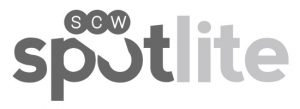 We’re always looking for great content highlighting the newest things in the world of fitness. Please submit your article directly to [email protected] for immediate consideration!
We’re always looking for great content highlighting the newest things in the world of fitness. Please submit your article directly to [email protected] for immediate consideration! Spotlite, March 22, 2024
Spotlite, February 19, 2024
Spotlite, January 20, 2024
Spotlite, December 21, 2023
Spotlite, November 18, 2023
Spotlite, October 22, 2023
Spotlite, September 21, 2023
Spotlite, August 19, 2023
Spotlite, July 19, 2023
Spotlite, June 19, 2023
Spotlite, May 18, 2023
Spotlite, April 21, 2023
Spotlite, March 28, 2023
Spotlite, February 18, 2023
Spotlite, January 21, 2023
Spotlite, December 16, 2022
Spotlite, November 19, 2022
Spotlite, October 22, 2022
Spotlite, September 24, 2022
Spotlite, August 23, 2022
Spotlite, July 22, 2022
Spotlite, June 20, 2022
Spotlite, May 18, 2022
Spotlite, April 20, 2022
Spotlite, March 25, 2022
Spotlite, February 17, 2022
Spotlite, January 14, 2022
Spotlite, December 17, 2021
Spotlite, November 18, 2021
Spotlite, October 25, 2021
Spotlite, September 16, 2021
Spotlite, August 9, 2021
Spotlite, July 10, 2021
Spotlite, June 8, 2021
Spotlite, May 14, 2021
Spotlite, April 30, 2021
Spotlite, March 30, 2021
Spotlite, February 23, 2021
Spotlite, January 20, 2021

